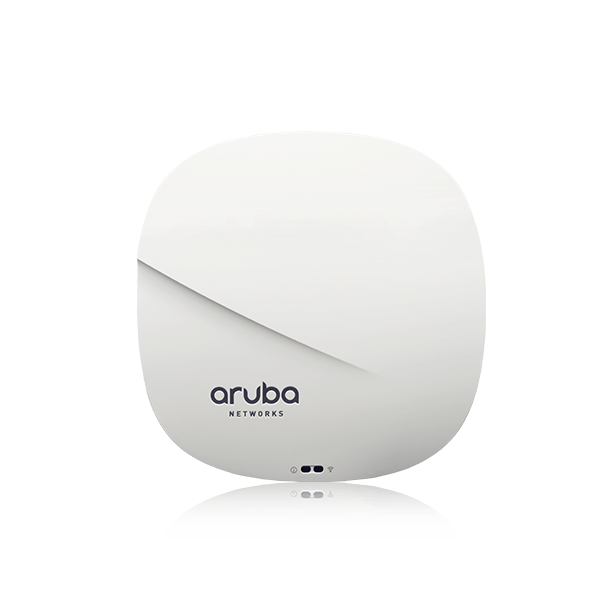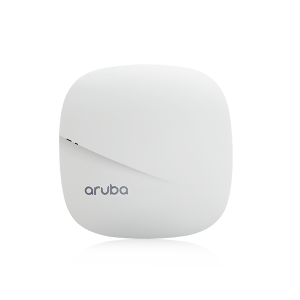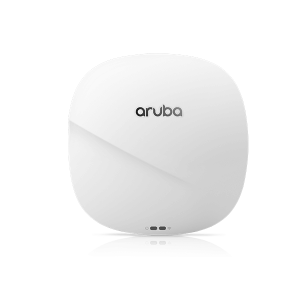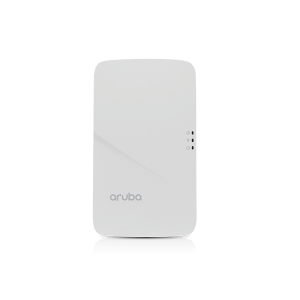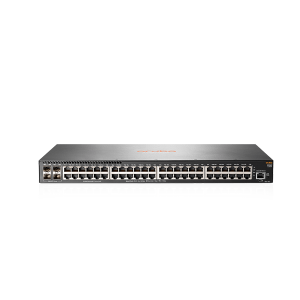Description
Overview
The 802.11ac 310 Series features 160 MHz channel bandwidth (VHT160), multi-user MIMO (MU-MIMO), and four spatial streams for maximum performance and density (4SS). It allows numerous devices to send data at the same time, increasing data throughput and network efficiency.
The upgraded ClientMatch technology in the 310 Series expands the client steering technology with MU-MIMO client awareness. It automatically detects MU-MIMO competent mobile devices and directs them to the nearest Aruba access point that supports MU-MIMO. When MU-MIMO capable mobile devices are grouped together, the network can take advantage of simultaneous transmission to these devices, boosting total capacity. During the technology transition period, these dynamic roaming restrictions depending on device categories assist customers in getting the greatest WLAN performance in a mixed device environment.
UNIQUE BENEFITS
• Dual Radio 802.11ac access point with Multi-User MIMO
– Supports up to 1,733Mbps in the 5GHz band (with 4SS/VHT80 or 2SS/VHT160 clients) and up to 300 Mbps in the 2.4 GHz band (with 2SS/HT40 clients).
• Built-in Bluetooth Low-Energy (BLE) radio
– Enables location based services with BLE-enabled mobile devices receiving signals from multiple Aruba Beacons at the same time.
• Advanced Cellular Coexistence (ACC)
– Minimizes interference from 3G/4G cellular networks, distributed antenna systems, and commercial small cell/femtocell equipment.
• Quality of service for unified communication apps
– Supports priority handling and policy enforcement for unified communication apps, including Microsoft Skype for Business with encrypted videoconferencing, voice, chat, and desktop sharing.
• RF Management
– Adaptive Radio Management (ARM) technology automatically assigns channel and power settings, provides airtime fairness, and ensures that APs stay clear of all sources of RF interference to deliver reliable, high-performance WLANs.
– The Aruba 310 Series Access Points can be configured to provide part-time or dedicated air monitoring for spectrum analysis and wireless intrusion protection, VPN tunnels to extend remote locations to corporate resources, and wireless mesh connections where Ethernet drops are not available.
• Intelligent app visibility and control
– AppRF technology leverages deep packet inspection to classify and block, prioritize, or limit bandwidth for thousands of applications in a range of categories.
• Aruba Secure Infrastructure
– Integrated wireless intrusion protection offers threat protection and mitigation, and eliminates the need for separate RF sensors and security appliances.
– IP reputation and security services identify, classify, and block malicious files, URLs and IPs, providing comprehensive protection against advanced online threats.
– Integrated Trusted Platform Module (TPM) for secure storage of credentials and keys.
• Intelligent Power Monitoring (IPM):
– Enables the AP to continuously monitor and report its actual power consumption and optionally make autonomous decisions to disable certain capabilities
– For the 310 Series Access Points, the IPM power-save feature applies when the unit is powered by an 802.3af
WI-FI RADIO SPECIFICATIONS
• AP type: Indoor, dual radio, 5 GHz 802.11ac 4×4 MIMO and 2.4 GHz 802.11n 2×2 MIMO
• Software-configurable dual radio supports 5 GHz (Radio 0) and 2.4 GHz (Radio 1)
• 5 GHz: Four spatial stream Single User (SU) MIMO for up to 1,733 Mbps wireless data rate to individual 4×4 VHT80 or 2×2 VHT160 client devices
• 2.4 GHz: Two spatial stream Single User (SU) MIMO for up to 300 Mbps wireless data rate to individual 2×2 HT40 client devices
• 5 GHz: Four spatial stream Multi User (MU) MIMO for up to 1,733 Mbps wireless data rate to up to three MU-MIMO capable client devices simultaneously
• Support for up to 256 associated client devices per radio, and up to 16 BSSIDs per radio
• Supported frequency bands (country-specific restrictions apply):
– 2.400 to 2.4835 GHz
– 5.150 to 5.250 GHz
– 5.250 to 5.350 GHz
– 5.470 to 5.725 GHz
– 5.725 to 5.850 GHz
• Available channels: Dependent on configured regulatory domain.
• Dynamic frequency selection (DFS) optimizes the use of available RF spectrum.
• Supported radio technologies:
– 802.11b: Direct-sequence spread-spectrum (DSSS)
– 802.11a/g/n/ac: Orthogonal frequency-division multiplexing (OFDM)
• Supported modulation types:
– 802.11b: BPSK, QPSK, CCK
– 802.11a/g/n/ac: BPSK, QPSK, 16-QAM, 64-QAM, 256-QAM
• Transmit power: Configurable in increments of 0.5 dBm
• Maximum (conducted) transmit power (limited by local regulatory requirements):
– 2.4 GHz band: +18 dBm per chain , +21dBm aggregate (2×2)
– 5 GHz band: +18 dBm per chain , +24dBm aggregate (4×4)
– Note: conducted transmit power levels exclude antenna gain. For total (EIRP) transmit power, add antenna gain
• Advanced Cellular Coexistence (ACC) minimizes interference from cellular networks.
• Maximum ratio combining (MRC) for improved receiver performance.
• Cyclic delay/shift diversity (CDD/CSD) for improved downlink RF performance.
OTHER INTERFACES
• One 10/100/1000BASE-T Ethernet network interfaces (RJ-45)
– Auto-sensing link speed and MDI/MDX
– 802.3az Energy Efficient Ethernet (EEE)
• USB 2.0 host interface (Type A connector)
• Bluetooth Low Energy (BLE) radio
– Up to 4dBm transmit power (class 2) and -91dBm receive sensitivity
– Integrated antenna with roughly 30 degrees downtilt and peak gain of 3.4dBi (AP-314/IAP-314) or 1.5dBi (AP-315/IAP-315)
• Visual indicators (multi-color LEDs): For system and radio status
POWER SOURCES AND CONSUMPTION
• The AP supports direct DC power and Power over Ethernet (POE)
• When both power sources are available, DC power takes priority over POE
• Power sources are sold separately
• Direct DC source: 12Vdc nominal, +/- 5%
– Interface accepts 2.1/5.5-mm center-positive circular plug with 9.5-mm length
• Power over Ethernet (PoE): 48 Vdc (nominal) 802.3af/802.3at compliant source
– Unrestricted functionality with 802.3at PoE
– When using IPM, the AP may enter power-save mode with reduced functionality when powered by an 802.3af PoE source (see details on Intelligent Power Monitoring elsewhere in this datasheet)
– Without IPM, the USB port is disabled and transmit power of the 2.4 GHz radio chains are reduced by 3dB to 15dBm max when the AP is powered by an 802.3af PoE source
• Maximum (worst-case) power consumption: 14.4W (802.3at PoE), 13.6W (802.3af PoE) or 12.7W (DC)
– Excludes power consumed by external USB device (and internal overhead); this could add up to 6.4W (PoE) or 5.9W (DC) for a 5W/1A USB device
• Maximum (worst-case) power consumption in idle mode: 6.4W (PoE) or 5.9W (DC)

